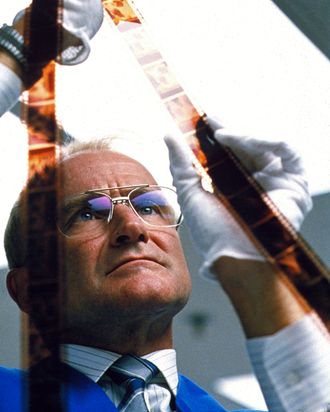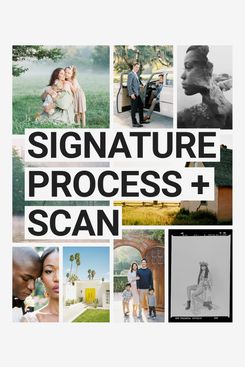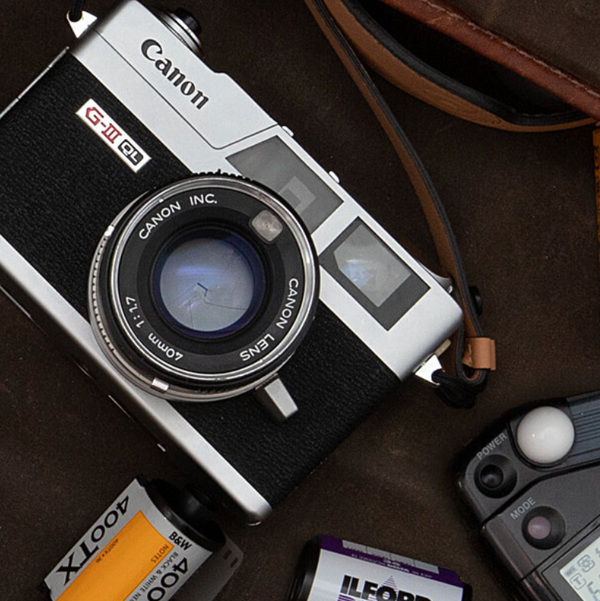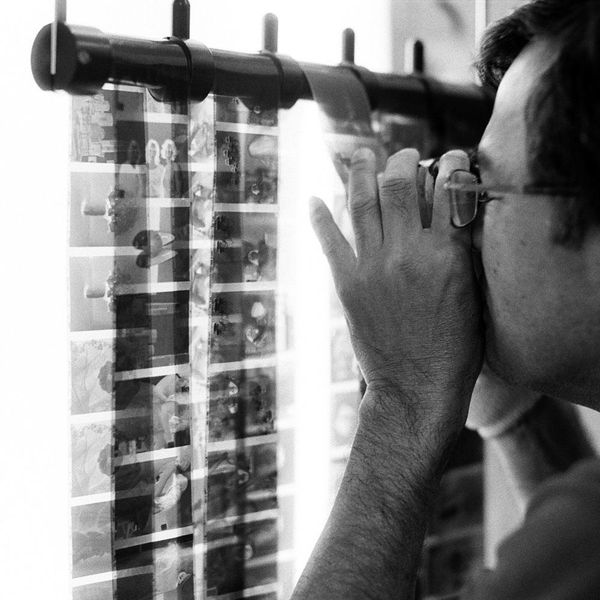
Digital photography may be more popular than film, but over the last few years, entire Instagram pages and YouTube channels have been created that are dedicated to taking pictures the old-fashioned way. Channels like Negative Feedback, along with those from Corey Wolfenbarger, Joe Greer, and Willem Verbeeck, have become online havens for budding film enthusiasts. But one thing a lot of them don’t address is where to send your film to be developed. “Film is delicate and it’s so important to work with a trusted lab for developing and scanning,” says Wesley Verhoeve, a photographer and curator. “It’s already quite expensive to shoot film, so the last thing I’d want to happen is to have that investment of time and money be ruined by shoddy lab work.”
It all comes down to who’s operating the machines and processing the film, says Kyle McDougall, a professional photographer and host of the film-photography podcast Contact Sheet. “You could send it to 20 different labs and you could get 20 different-looking images or scans back,” he says. While you can still get film developed at places like Walgreens and Walmart, almost every expert we spoke to says you’ll get much better results at a professional lab. Wolfenbarger, a photographer and one of the aforementioned film-loving YouTubers, says it’s a night-and-day difference between using a professional online photo-development service and cheaper services. “Not only do they have better machines to process the film and scan the film, they also often will have people that are very passionate about photography,” he says. Having someone that understands photography is especially important when it comes to scans, the digital files you will get after your photos are processed, because they get how lighting, color, and contrast can affect your photos.
Along with better scans and prints, you’ll also get much more accurate colors from the pros. With cheaper labs, “You’ll get these very wacky colors of purple or green where it shouldn’t be,” Wolfenbarger says. “I think a lot of the joy in shooting film comes from trusting the people that put just as much thought and care into developing your images as you did in making them,” says JC Calubayan, a photographer and co-creator for the film-focused YouTube channel UnderDVLP.
To help make sure your images are accurate and clear — and not like something you’d show someone to convince them the Loch Ness Monster was real — we asked Verhoeve, Wolfenbarger, McDougall, Calubayan, and four other photographers to recommend their favorite professional film-development labs.
The FindLab has a variety of film-development pricing set up by different tiers. Premium scans, for example, are for people who want their film developed and color-graded in a way that provides them with perfect images. Auto scans are meant more for beginners who are starting to develop their first rolls and want to figure out the postediting process for themselves. As McDougall explains, when you submit your film, either in person or by mail, you can check preferences that specify how you like the brightness or contrast. “And then afterwards, they’ll give you feedback at the FindLab or they’ll ask you if you have any questions. You can say, ‘Something looked like this. Why is that?’ and they’ll let you know why, and then you can kind of understand things a little better and then learn from it, essentially.” That communication is nearly as important as print quality, McDougall says.
PhotoVision is a professional lab based in Salem, Oregon, that Wolfenbarger has used for four or five years. (If you don’t live in Oregon, you can mail your film in.) “I found them when I first began shooting film and I was very overwhelmed by the process,” he says. What he likes most about PhotoVision is the customer service. “You need to have people that actually care about the process. PhotoVision is a family-owned business that’s been in operation for over 50 years. Even though they’re now a very large lab, they keep that a priority, so they’re always willing to hop on the phone with me or take my emails.” No matter how much help you might need, he says, PhotoVision will provide it. That can be huge for people just starting out.
As opposed to the options above, which also have brick-and-mortar stores, online-only film labs like DarkRoom tend to be “cheaper in the price of developing and scanning,” says Sissi Lu, another co-creator of UnderDVLP. And that’s including shipping costs, since, she says, “you usually only have to cover one-way shipping and they ship the negatives back to you for free.” Although you’ll have to wait a little longer because of shipping, and it might be a little scary to drop your film in the mail and hope it gets safely to its destination, Lu says it’s still a better option than a local nonprofessional lab. “Comparing a professional online lab to a local pharmacy, I will choose the pro labs over pharmacies without any hesitation. In my opinion, it’s better to anticipate the wait time than risking potentially ruining the film,” she says. Lu also appreciates DarkRoom’s educational offerings. Its Instagram is filled with tutorials comparing different film stocks, she says, covering how pushing and pulling (a technique used to add contrast to low-light situations or take away contrast and give more details to shadows) works or how different lenses can change the way a photo feels and looks. Derek Brooker, another co-founder at UnderDVLP, is also a fan. “I have used DarkRoom and absolutely loved the stuff I got back. They send you a little mailer so all you pay for is the postage and they send you the scans back right away,” he says.
This shop, which offers online and in-person experiences, has “worked with a number of professional photographers for decades and they understand how to add consistency to your work,” says Braedon Flynn, a professional photographer and owner of Film Supply Club, an online resource for film-photography enthusiasts. “I consider them almost my back-end editors,” he says. “There are a lot of places that do a general scan. But a pro-level lab like Richard Photo has lab technicians that are adjusting for color, for contrast, for tonality. If the image has too much green, they’ll be able to see that and adjust it,” he says. Another benefit is the relationship you build with your dedicated developer. “You create a profile with them and you will have the same person that is scanning your work when it comes through to their lab.” What this means, Flynn says, is that if two people were to send film to the same lab shot in a similar way, “Yours is going to come back warmer with more contrast in mind, and mine might come back cooler because that’s how you like it versus that’s how I like it. And that’s the power of a pro lab.”
The Strategist is designed to surface the most useful, expert recommendations for things to buy across the vast e-commerce landscape. Some of our latest conquests include the best acne treatments, rolling luggage, pillows for side sleepers, natural anxiety remedies, and bath towels. We update links when possible, but note that deals can expire and all prices are subject to change.
Article From & Read More ( The Best Film Developers, According to Photographers - New York Magazine )https://ift.tt/3vye1se
Film
Bagikan Berita Ini


















0 Response to "The Best Film Developers, According to Photographers - New York Magazine"
Post a Comment